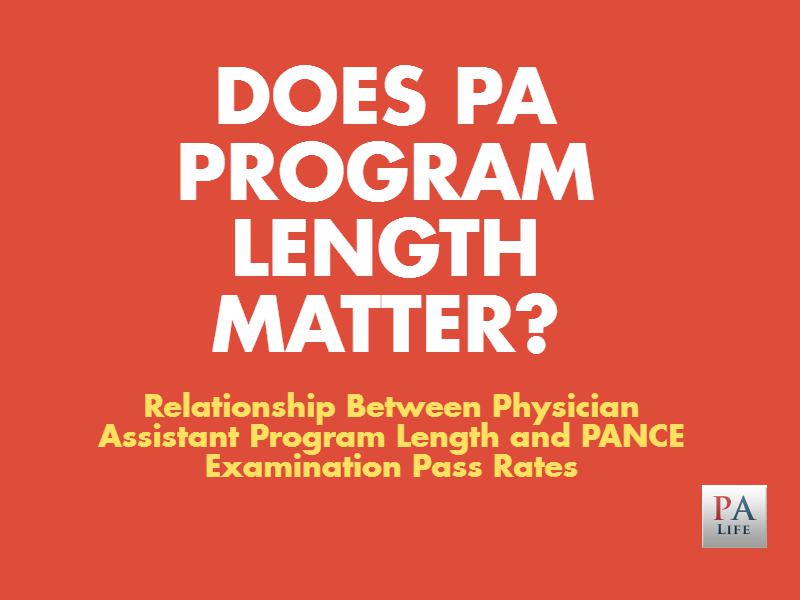
Exploring the Impact of PA Program Duration on PANCE Success and PA Competence
In a time long, long ago, just before the release of the first iPhone, I graduated from the UMDNJ (now Rutgers) PA program.
It was a three-year PA program with a nearly 100% PANCE pass rate. At the time, Rutgers was one of the best-ranked PA schools in America, and they continue to rank among the top 25 PA schools in the country.
As an avid practitioner of confirmation bias (affiliate link), I fell victim to the "more is better" attitude, believing that my three-year PA program naturally must provide a more comprehensive education. Why else extend the length of a program?
However, a recent article published by the PAEA in the Journal of Physician Assistant Education provides a more scientific answer to this question.
Do longer PA programs have any advantage over a standard two-year program?
The PAEA published this research article examining the relationship between physician assistant educational program length and PA programs' 5-year average PANCE first-time pass rates.
Relationship Between Physician Assistant Program Length and Physician Assistant National Certifying Examination Pass Rates
Fifty years ago, Duke University graduated the first class of physician assistants as part of a two-year program whose goal was to rapidly deploy these clinicians to assist physicians in delivering medical care.
During the past two decades, PA program length has increased to an average of 26 months, with some programs spanning 36 months.
The longer programs were developed to accommodate the extra time needed to complete a master's program senior project.
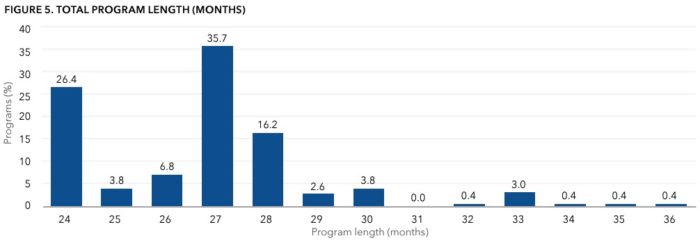
The "more is better" attitude has some negative consequences, including
- Increased student debt
- Delayed entry of qualified clinicians into the health care system at a time of practitioner shortage
As longer programs became more common, some medical educators questioned whether two years was an appropriate length of time to train PAs, especially in light of their expanding scope of practice and the decrease in pre-pa school medical experience, which defined the previous generation of PAs.
Since we PAs need to pass the PANCE exam to be eligible to practice and the fact that this is an indicator of entry-level clinical competence, there is a distinct advantage to knowing whether a longer length of training is associated with higher PANCE pass rates.
Time is of the Essence
The Association of American Medical Colleges predicts a shortage of more than 60,000 physicians in the next two years and a shortage of twice as many by 2025.
The PA field is experiencing rapid growth and increased demands.
The Bureau of Labor Statistics has predicted a 30% increase in demand for PAs over the next decade, a much faster than average rate of growth.
In response to the shortage of physicians and the growing demand for PAs, institutions of higher education have recognized the imminent need for more PA graduates.
Encouraged by the high rating of career potential for the profession, these institutions have initiated the development of many new programs.
As of January 2024, prospective PAs can choose from among 306 accredited master’s degree-level programs in the U.S.
There are also a number of established and developing PA programs here and in other countries.
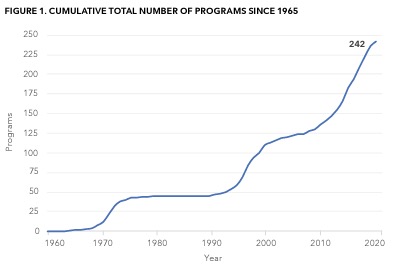
Do longer PA programs lead to higher levels of PA competence?
Successful PANCE passage suggests PA graduate competency.
If study results indicated that shorter PA programs prepared students to pass the PANCE, as well as longer programs do, then educators might have the incentive to structure shorter programs.
Reducing the length of training while maintaining competent graduates would help to reduce PA student debt, ease clinical site competition, and more expeditiously deploy PA graduates into the healthcare workforce.
Relationship Between Program Length and PANCE Pass Rates

Median total PA program length is 27 months, with total program length ranging from a minimum of 24 to a maximum of 36 months.
- The median program's 5-year average first-time PANCE pass rate was 95%.
- Program PANCE pass rates ranged from a minimum of 73% to a maximum of 100%.
Data on individual phase length (didactic and clinical phase) of programs
- Median length of the didactic phase was 13 months, with a minimum of 10 and a maximum of 22 months.
- The median length of the clinical phase was 12 months, with a minimum of 10 and a maximum of 24 months.
Program phase length and PANCE pass rates demonstrated no significant relationship for the didactic phase and no significant relationship for the clinical phase
Discussion
Medicine is an ever-changing field that continues to grow in both volume and complexity.
As a result, the amount of information and skills that a PA student must master has become burdensome; this information overload may prompt PA educators to consider lengthening the educational process.
Although increasing the number of PAs graduating each year will help to partially mitigate the physician shortage, the effects of longer length programs on students and educational institutions must be considered.
There are several considerations regarding longer educational programs:
- Competition is increased for clinical sites because more new programs are being developed, and longer programs require additional clinical training sites
- There is an inadequate number of experienced PA faculty to cover the required coursework needed for a longer curriculum
- Students incur increased tuition debt, which can exceed $100,000 at private universities. This expense may prompt PA graduates to opt for more lucrative careers in specialty medicine and forego the primary care field where the greatest need exists.
- It is predicted that only 16% of new PA graduates will fill primary care positions by 2025!
How about shorter Medical School?
In a similar manner, it has been suggested that streamlining medical education for physicians and shortening the length of training would lower student tuition debt and focus attention on team-based medicine.
Several medical schools already offer shorter programs. Although there is limited outcome data on graduates of these schools, there is no evidence that they perform poorly on board examinations.
The authors of the study call for a 30% reduction in medical education length by 2020.
The Results
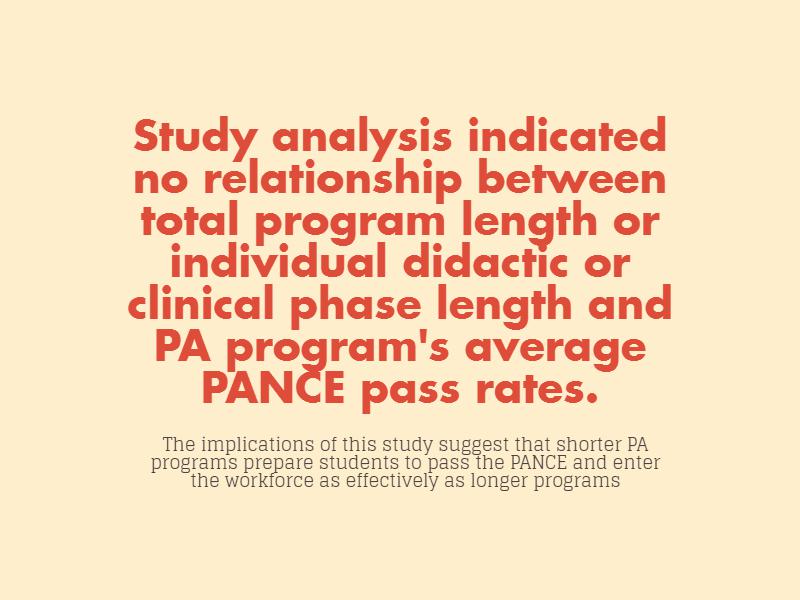
Study analysis indicated no relationship between total program length or individual didactic or clinical phase length and the PA program's average PANCE pass rates.
The implications of this study suggest that shorter PA programs prepare students to pass the PANCE and enter the workforce as effectively as longer programs.
With the anticipated rapid growth of PA programs, these results could influence established and developing program directors' decisions on determining program length.
Since the current average program length is 26 months, program directors may feel the need to replicate this curriculum model; however, as noted, there are drawbacks to longer programs.
Longer PA programs are associated with:
- increased institutional costs
- increased demand for faculty
- increased student debt
- a delay in deploying clinicians into the workforce
- increased institutional costs for faculty, advisor, and staff support
- additional classroom space
- an additional semester of preceptor stipends for scarce clinical experiential practice rotations
Not to mention, students in longer programs will accrue additional fees as well as housing, transportation, and tuition costs for each additional semester
Owing to clinical site shortages, many programs are now paying for clinical rotations, increasing the cost of operating the program.
Final thoughts
Since grading and joining the workforce, I have had the opportunity to work alongside dozens of competent, highly skilled, compassionate, hard-working, and dedicated PAs, most of whom attended 27-month programs.
Each one of them is proof positive that my superiority complex was completely unwarranted.
This article proves my growing suspicions that longer PA programs offer no real benefit with evidence to suggest longer programs have unwanted side effects such as increased student debt, a strain on the faculty, institutions, and rotation sites.
The downstream consequences of increased PA school debt are pushing more and more new PA school graduates into specialty practice based on financial necessity.
While I admit that PANCE pass rates are not the best predictor of professional acumen, my anecdotal evidence supports the research provided in this study.
Also, I agree entirely with the authors who support a 30% reduction in medical school education.
In many parts of the world, the medical school educational phase is combined with a two-year undergraduate program, resulting in a much shorter and highly focused medical education. Often just five years. This would bring many new applicants (many who currently are on the PA school track) into the role of supervising physician.
Technological advances cannot be ignored and will be a huge factor in augmenting and automating our medical knowledge, allowing for greater ease of providing real-time evidence-based medicine using the most up-to-date clinical guidelines without the need to memorize and an ever-growing web of medical data.
Using knowledge from studies like these, along with tools to gather, collect, and digest big data, we can work together to maintain a highly-skilled, compassionate medical workforce while decreasing student debt, reducing medical error, and driving down healthcare costs.
PAs will continue to be at the forefront of this transition for years to come.
Resources: The Journal of Physician Assistant Education: Volume 27 - Issue 1 - p 3–6


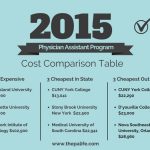











http://autozen.pl/forum-pomysly-na-zamarzajace-paliwo-zima.php
Looking for a new or used automobile could be a tough approach unless you know what you are actually doing. By teaching yourself about car store shopping before you go to the dealer, you possibly can make points much easier for yourself. The following tips might help the next buying trip become more pleasant.
Constantly take a mechanic together when looking for a fresh car. Vehicle sellers are notorious for marketing lemons and you may not desire to be their following target. Provided you can not obtain a mechanic to think about cars together with you, at the very least make certain you have him take a look at closing selection before you buy it.
Know your limits. Before you begin shopping for your forthcoming automobile or pickup truck, determine what you can afford to spend, and follow it. Don’t neglect to incorporate interest in your estimations. You will definitely pay all around twenty percent as a down payment as well, so be ready.
Prior to visiting a dealership, know what sort of vehicle you desire. Investigation all you options before store shopping so you can determine what works well with your financial allowance and loved ones requirements. Shop around to determine simply how much you need to be paying for a possible auto.
Before you sign any contract make time to read every range, including the fine print. When there is something shown that you just do not comprehend, do not indication up until you get an answer that you comprehend. Unsavory salesmen can use a contract to put in a lot of fees that have been not discussed.
If you keep your previous guidance at heart next time that you go purchasing a auto, you may be more likely to get a full deal. Buying a automobile lacks to become headache. Use the tips using this post and you may receive the vehicle you desire at a great price.